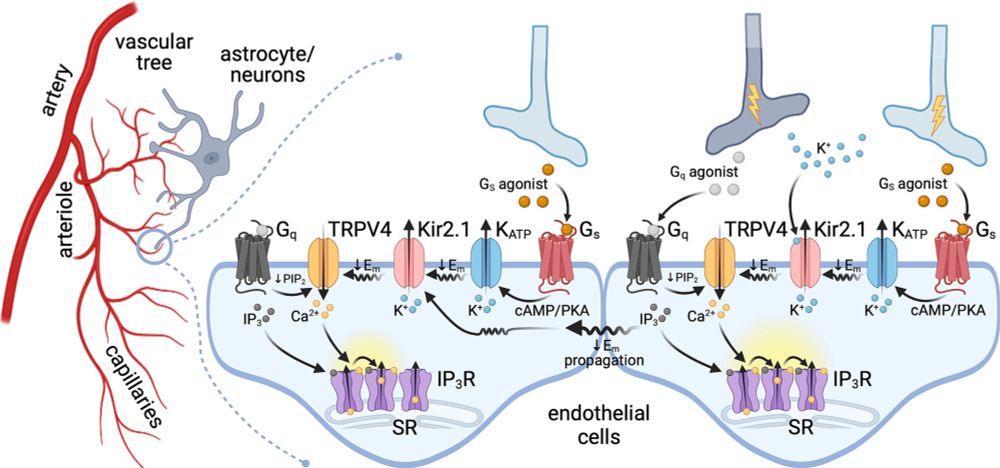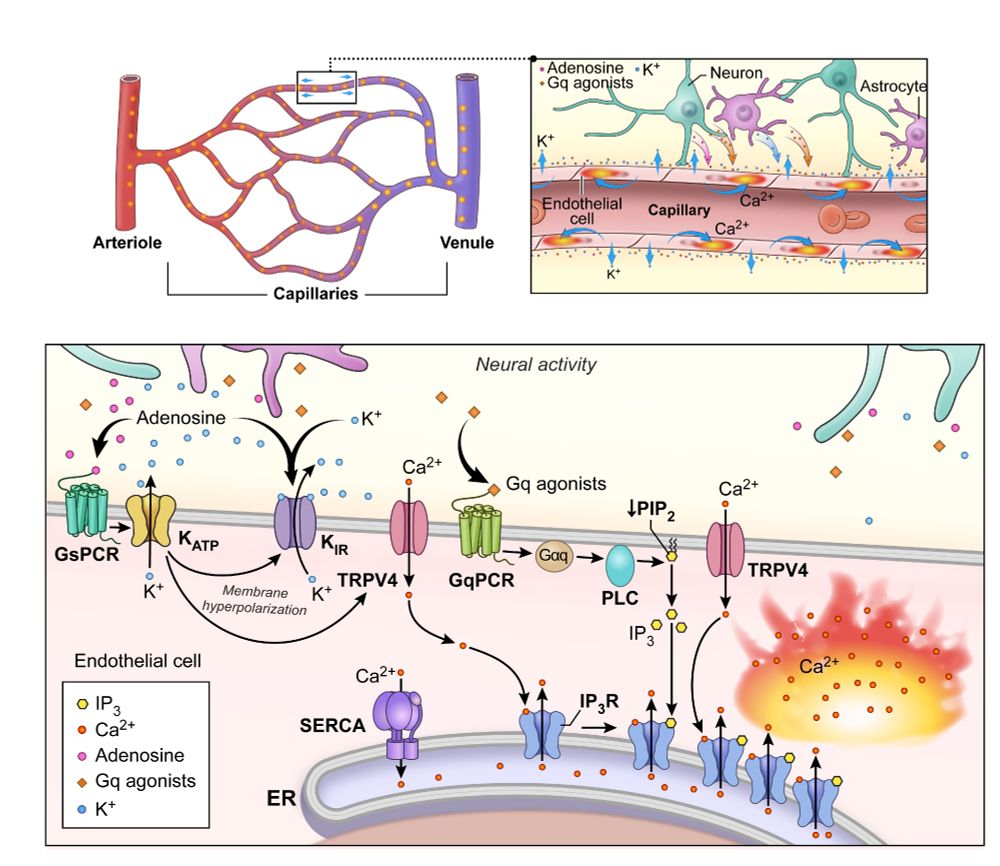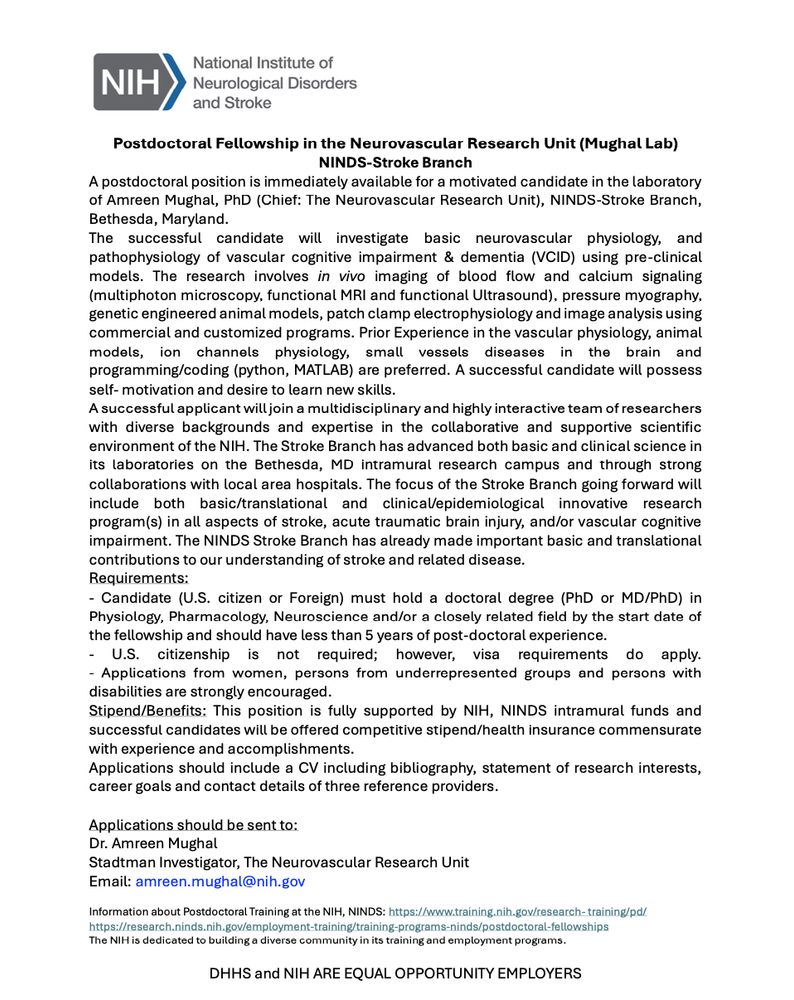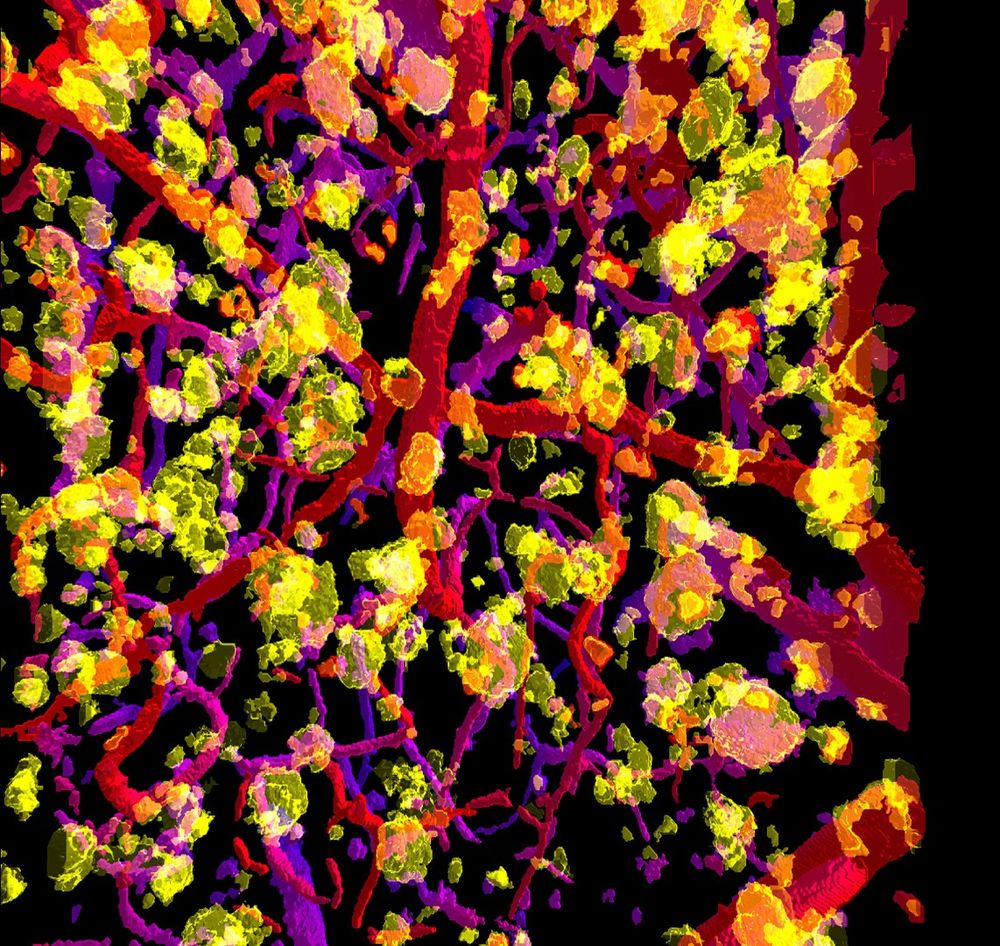Amreen Mughal
@amreenmughal.bsky.social
560 followers
460 following
21 posts
PI @NINDS @NHLBI, Stadtman Tenure-track. 2024 NIH Distinguished Scholar. Interested in cerebral blood flow, neurovascular physiology, ion channels, in vivo microscopy, AD/ADRD, VCID.
Posts
Media
Videos
Starter Packs
Reposted by Amreen Mughal
Amreen Mughal
@amreenmughal.bsky.social
· Jun 10
Amreen Mughal
@amreenmughal.bsky.social
· Apr 30
Amreen Mughal
@amreenmughal.bsky.social
· Mar 25
Reposted by Amreen Mughal
Justin Bollinger
@bollinger.bsky.social
· Feb 16
Reposted by Amreen Mughal
Amreen Mughal
@amreenmughal.bsky.social
· Jan 16
Reposted by Amreen Mughal
Baptiste Lacoste
@blacoste.bsky.social
· Dec 12
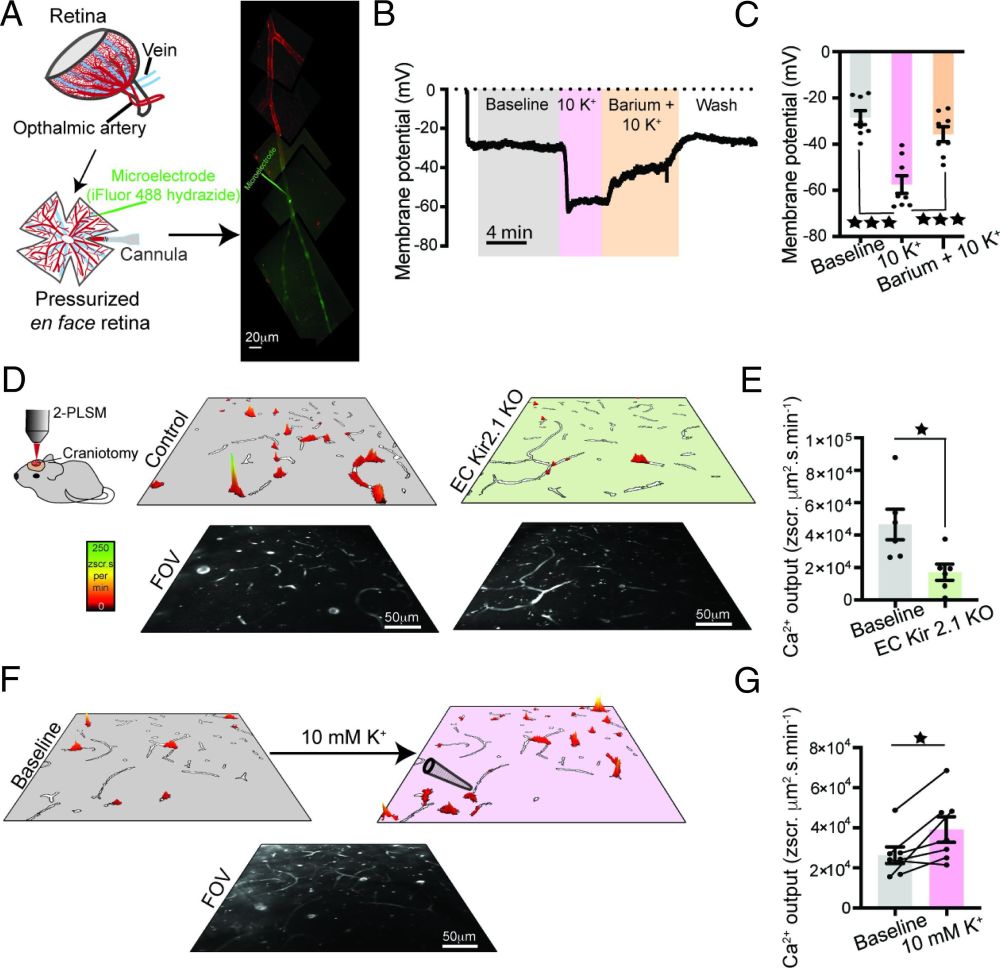
Electrocalcium coupling in brain capillaries: Rapidly traveling electrical signals ignite local calcium signals | PNAS
The routing of blood flow throughout the brain vasculature is precisely controlled
by mechanisms that serve to maintain a fine balance between loca...
doi.org
Amreen Mughal
@amreenmughal.bsky.social
· Dec 12
Amreen Mughal
@amreenmughal.bsky.social
· Dec 10
Reposted by Amreen Mughal
Amreen Mughal
@amreenmughal.bsky.social
· Nov 21
Amreen Mughal
@amreenmughal.bsky.social
· Nov 18
Amreen Mughal
@amreenmughal.bsky.social
· Nov 16
Amreen Mughal
@amreenmughal.bsky.social
· Nov 16

